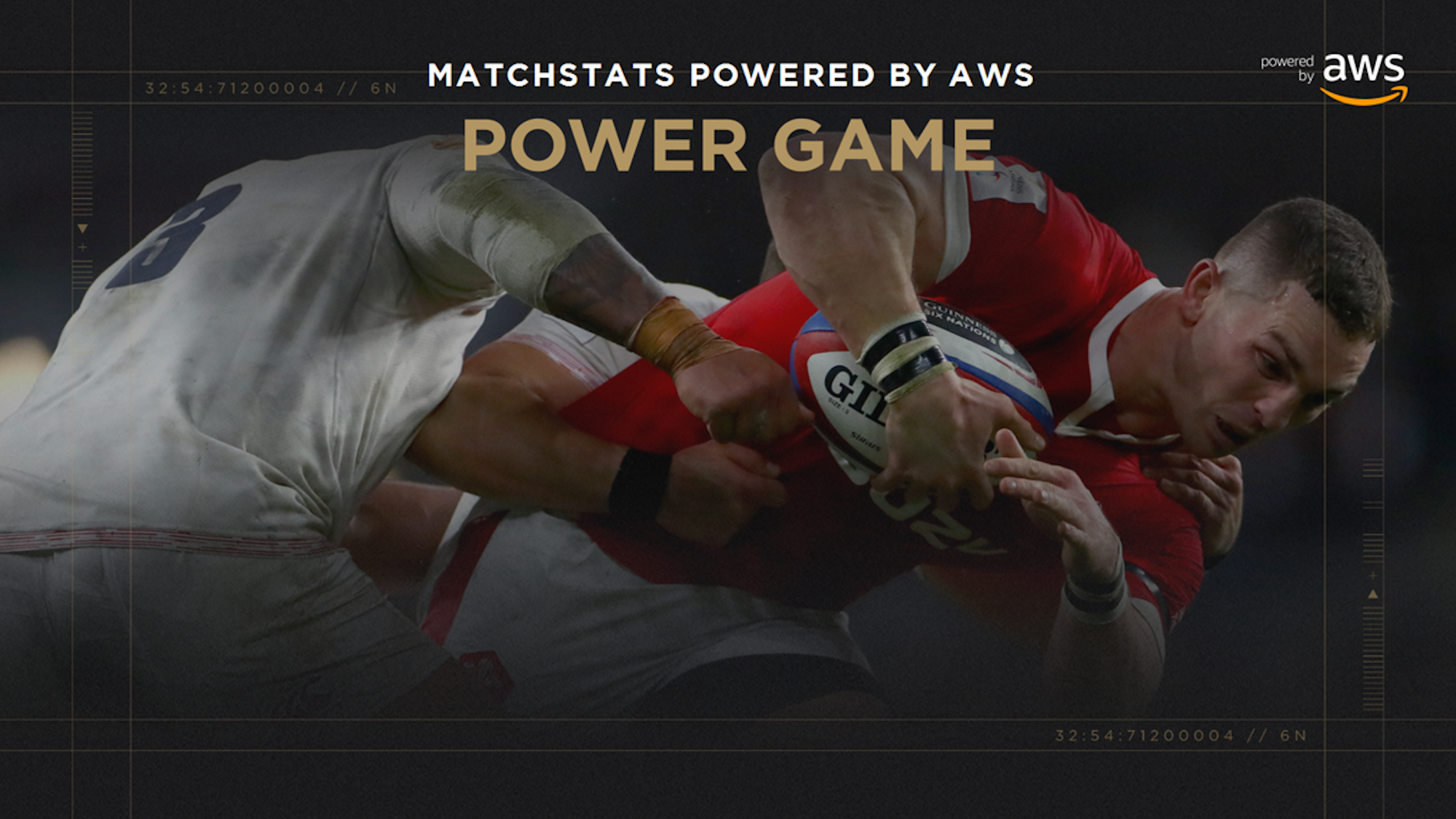Whether in attack or defence, power is a fundamental component in rugby.
It is power that allows a player to break a tackle, crash over the tryline through a wall of bodies, lift a lineout jumper, clear opponents out of a ruck and propel a scrum or maul forward.
As such, power will be at the heart of the Guinness Six Nations when the 2020 Championship resumes with four blockbuster matches as players battle for on field supremacy.
And understanding where and how this power is exerted has never been easier thanks to one of the new MatchStats powered by AWS, which examines exactly that for fans.
Showing the overall dominance of a team, Power Game considers both attack dominance using gainline positive percentage and number of line-breaks and defence using dominant tackles.
WHAT YOU NEED TO KNOW
Technology means rugby fans have greater access to insights into the game than ever before thanks to the MatchStats powered by Amazon Web Services (AWS).
New enhanced match graphics and statistics give supporters greater understanding into a range of key in-game events, including scrum analysis, play patterns, try origins and much more.
Among the revised and finessed AWS MatchStats for the resumption of the 2020 Guinness Six Nations is Power Game – analysing how effective teams are with and without the ball.
Power Game determines the direct impact of a team dominating particular action areas, helping supporters make sense of the crucial parts of the game more easily.
These key action areas which are examined include a team’s effectiveness at reaching and getting over the gainline, producing dominant tackles and creating line breaks.
WHY IS IT IMPORTANT?
Split into attack and defence, the purpose of the Power Game stat is to show where a team is dominant, where a team is lacking, and potentially where the match is being won or lost.
Power Game (Attack) sees the addition of Metres Made After Contact – only metres made once a player has carried the ball into contact, been tackled or burst through/brushed off a tackle.
It is a much more meaningful and relevant statistic than overall metres made, while the graphics will also show where line breaks have been made and how many tries scored as a result.
Power Game (Defence) shows how many tackles a team has made and where they have missed tackles, as well as where on a pitch a team has made dominant tackles or turnovers.
A perfect example of the importance of power in rugby was provided by England in their thrilling 33-30 victory over Wales at Twickenham in the 2020 Guinness Six Nations.
Eddie Jones’ men made 227 tackles with a 92 per cent success rate to control most of the game against the visitors, racking up a remarkable 33 dominant tackles in the process.
Wales on the other hand only made eight dominant tackles – when the defender makes contact and drives the attack back in one movement – which proved crucial at the end of 80 minutes.
The Red Rose also led the way when it came to line breaks, making six compared to Wales’ five, with Anthony Watson among those who cut through to score a well-worked try.
‘MatchStats’ powered by AWS are built using detailed historical rugby data from Stats Perform, who bring decades of experience in collecting and analysing data – including the utilisation of AI – to bring new understanding to those in media, betting and team performance.
For more information about MatchStats powered by AWS, visit the website.



